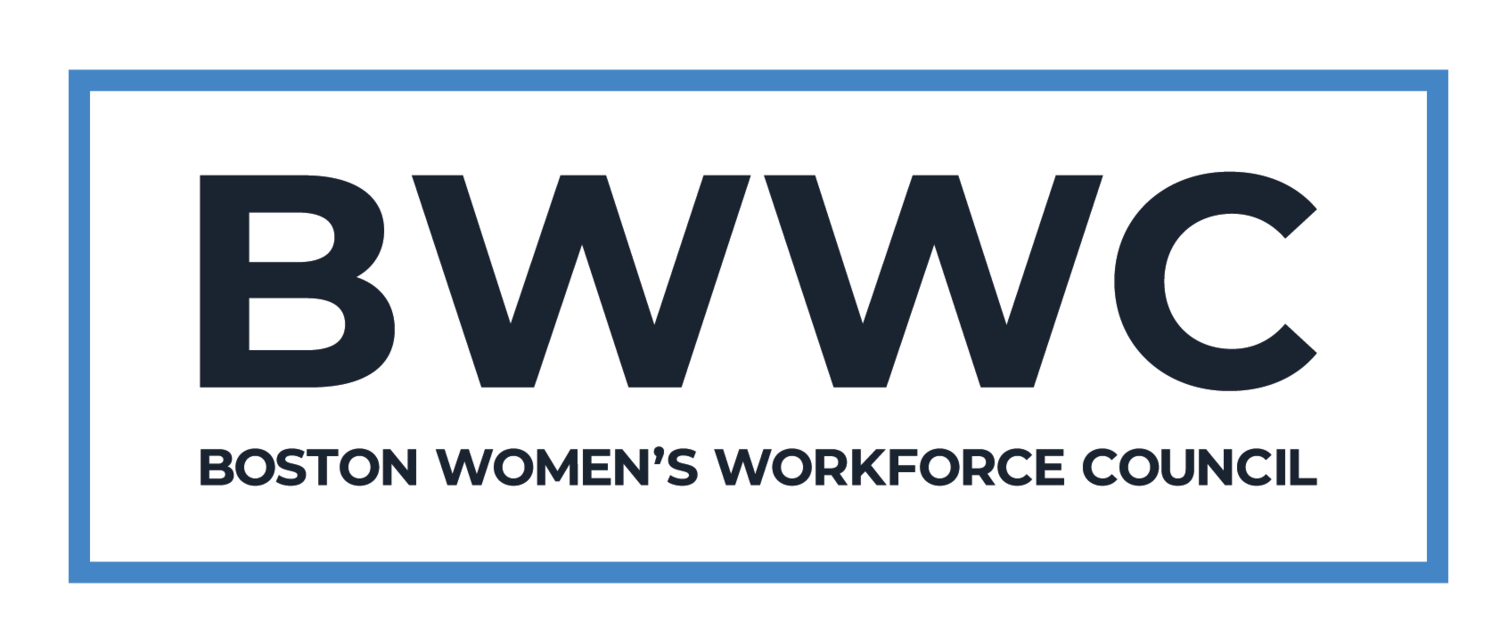If you don't see it, you can't change it.
We believe that the first step in our mission of achieving pay equity in Boston is understanding the wage gaps and inequities that exist. We can then take action to support employers with remedying them.
This is why we anonymously collect, analyze, and report on 100% Talent Compact Signer employee data - it allows us to provide a community snapshot of progress being made to close these gaps.
Pay Equity vs. Equal Pay
Language matters. Understanding the relationship between equal pay and pay equity is the first thing we talk about with our new 100% Talent Compact Signers.
Equal pay focuses on women doing the same work as men, in the same positions, and has been a law since 1963 (Equal Pay Act). Pay equity is an analysis that looks at equal pay for equal work but goes further to consider where underrepresented groups sit in an organization, helping us understand the power gaps that exist.
Biases and lack of access to promotions, bonuses, and flexibility can perpetuate inequities across all levels of an organization, even if equal pay for equal work is in place. That is why we focus on the more comprehensive term, pay equity because it gives us a better understanding of the reasons behind the gender and racial wage gaps and how to remedy them.
Doing the Math - Calculating Your Raw Wage Gaps
Employers often do not know that they have gender and racial wage gaps. We recommend starting by calculating the raw wage gap which compares the average annual compensation between groups of employees across the organization. Raw means that there is no adjustment for type of occupation, education, and experience because often these items are a product of discrimination or bias so shouldn’t be used to justify lower salaries.
Calculating the raw wage gap is different from calculating the adjusted wage gap (equal pay for equal work). The raw wage gap compares the average annual compensation between groups of employees across the organization. For example, the average annual compensation for white men vs. the average annual compensation for Black women.
Raw wage gaps highlight whether your organization has a power gap, which occurs when women are continuously outnumbered, outranked, and out-earned by men throughout various levels of an organization. This can systematically prohibit women from achieving pay equity. Our goal is that doing the math will encourage internal reflection, conversation, and action among your leadership team.
Proven Interventions
As part of our commitment to facilitating the sharing of best practices to eliminate the wage gap and achieve pay equity in Boston, we publish effective interventions reports for our 100% Talent Compact Signer community.
Our 2020 Interventions Report features workplace interventions proven to decrease gender and racial wage gap inequities. It highlights actions that employers can take today to eliminate gender and racial wage gaps, especially in light of the challenges COVID-19 has added to the lives of working women.
Recognizing National Equal Pay Days
National equal pay days symbolize how far into the year a woman must work in order to earn what a man earns.
As part of our work to raise awareness about pay inequities in Boston and nationally, we recognize each national pay day in collaboration with the Mayor’s Office of Women’s Advancement.
Over the past few years, our biennial wage gap measurement findings highlight that Boston’s equal pay days typically fall later into the calendar year than the national equal pay days. On each national equal pay day, we highlight these discrepancies, as we work to inspire, encourage, and provide resources to our employers on how to close these gaps. On each national equal pay day, we highlight these discrepancies, as we work to inspire, encourage, and provide resources to our employers on how to close these gaps.







